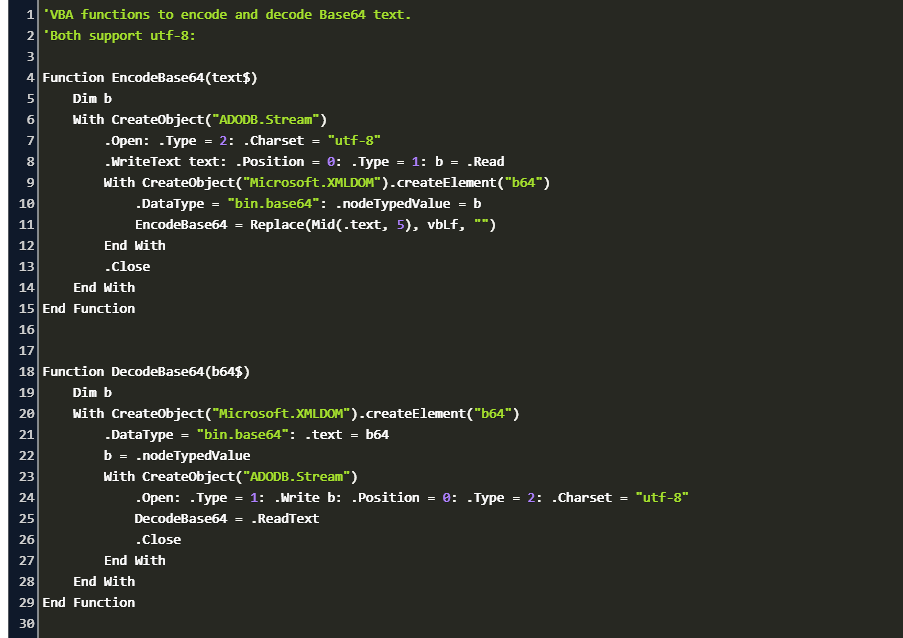
- PURPOSE OF BASE64 ENCODING HOW TO
- PURPOSE OF BASE64 ENCODING UPDATE
- PURPOSE OF BASE64 ENCODING DOWNLOAD
PURPOSE OF BASE64 ENCODING DOWNLOAD
This not only increases your bandwidth bill, but also increases the download time.Įncoded data will always have the following characteristic:

By consisting only of ASCII characters, base64 strings are generally url-safe, and that’s why they can be used to encode data in Data URLs.Īlthough Base64 is a relatively efficient way of encoding binary data it will, on average still increase the file size for more than 25\%.
PURPOSE OF BASE64 ENCODING HOW TO
When everything up to the "." is decoded, it comes out gibberish, so I'd like to know if you know or can surmise how to use the "tail" code to accomplish a proper decode.READ ALSO: Can phones connect directly to satellites? Why is Base64 safe?īase64 is a group of binary-to-text encoding schemes that represent binary data in an ASCII string format by translating it into a radix-64 representation. My program decodes base64 strings with no problem, but recently came across a string with an extra "tail" on it. The string is: V2pBalhOU2dXam1qV3RTZ1dqSTJYdFNnV2pTaldOU2dXakUyV0RTZ1dqbWpXdFNnV2pJMld0U2dXaklqV3RTZ1dqbWpYalNnV2pJaldqU2dXalNqV05TZ1dqSTJXdFNnV2pJald0U2dXakkyWHRTZ1dqU2pXTlNnV2pJald0U2dXakkyWHRTZ1dqSTJXdFNnV2pJMlhEU2dXaklqWURTZ1dqUzJXalNnV2pTaldOU2dXaldqV0RTZ1dqU2pXTlNnV2pJalhqU2dXakkyWHRTZ1dqSTJYdFNnV2ptalhEU2dXalNqV05TZ1dqSWpYTlNnV2ptaldqU2dXam1qWHRTZ1dqbWpYdFNnV2pTaldOU2dXam1qV2pTZ1dqSWpYTlNnV2pTalhqU2dXaklqV2pTZ1dqU2pXTlNnV2pJald0U2dXakkyWHRTZ1dqbWpYdFNnV2pJMlh0U2dXakkyV3RTZ1dqSWpXalNnV2pJMlh0U2dXalMyV2pTZ1dqU2pXTlNnV2pFald0U2dXakVqWURTZ1dqRWpYdFNnV2pBMlhEU2dXalNqV0RTZ1dqU2pXTlNnV2pFalhqU2dXam1qWURTZ1dqSWpXdFNnV2pJMlh0U2dXalNqV05TZ1dqSWpYTlNnV2ptald0U2dXam1qV2pTZ1dqbWpZTlNnV2ptaldEU2dXaklqV2pTZ1dqU2pXTlNnV2pJMld0U2dXaklqV3RTZ1dqSTJYdFNnV2pTaldOU2dXakkyWE5TZ1dqbWpZRFNnV2ptalhqU2dXam1qV2pTZ1dqbWpZTlNnV2ptaldEU2dXalMyV2pTZ1dqU2pXTlNnV2ptaldEU2dXakkyV3RTZ1dqbWpYalNnV2pJMlh0U2dXaklqV2pTZ1dqUzJXalNnV2pTaldOU2dXakkyV3RTZ1dqbWpZTlNnV2pJMlhEU2dXalNqV05TZ1dqbWpYalNnV2pJalhEU2dXakkyWE5TZ1dqbWpXdFNnV2pTaldOU2dXam1qWGpTZ1dqSWpYRFNnV2pJMlhOU2dXam1qV3RTZ1dqU2pXTlNnV2ptalhqU2dXam1qWURTZ1dqSWpXdFNnV2pJMlh0U2dXalNqV0E9PQ=
PURPOSE OF BASE64 ENCODING UPDATE
Hey, we got an update in form of a weird base64 string! As a hint, I think, there was a picture of scissors and a 10 - i tried decoding the base64, but I just can't manage to get to anything that makes sense, would anybody have a clue what would be to be done? The past riddle was to format hex to binary, and then to text, but this one is impossible, I think. ABCDEF is encoded to QUJDREVG and there is no need to add a padding character because Base64 string is 8 characters long (that is, it's divisible by 4). ABCDE is encoded to QUJDREU= and there is appended only one padding character because QUJDREU= (7 chars) is not divisible by 4. ABCD is encoded to QUJDRA= and there are appended two padding characters because QUJDRA (6 chars) nor QUJDRA= (7 chars) is divisible by 4. ABC is encoded to QUJD and there is no need to add a padding character because Base64 string is 4 characters long (that is, it's divisible by 4). AB is encoded to QUI= and there is appended only one padding character because QUI (3 chars) is not divisible by 4. Some examples: - A is encoded to QQ= and there are appended two padding characters because neither QQ (2 chars) nor QQ= (3 chars) is divisible by 4. So, if the output string is too small, it appends a padding character until the length is divisible by 4. Hi! By and large, the padding character ensures that the length of the Base64 string is a multiple of four. Given all of the above, a Base64 value can be defined using the following regular expression: ^+=$ All indices are listed in the Base64 table above. Only indices determine which characters will be used to encode the data, and only thanks to them you can “recover” the original data. Nevertheless, the heart of the algorithm contains only 64 characters, and for each of them there is a unique index. By and large, the padding character ensures that the length of Base64 value is a multiple of 4 bytes and it is always appended at the end of the output. That is, the equal sign does not own an index and is not involved in the encoding of data.

In addition to these characters, the equal sign ( =) is used for padding. Guru A virtual teacher who reveals to you the great secrets of Base64


 0 kommentar(er)
0 kommentar(er)
